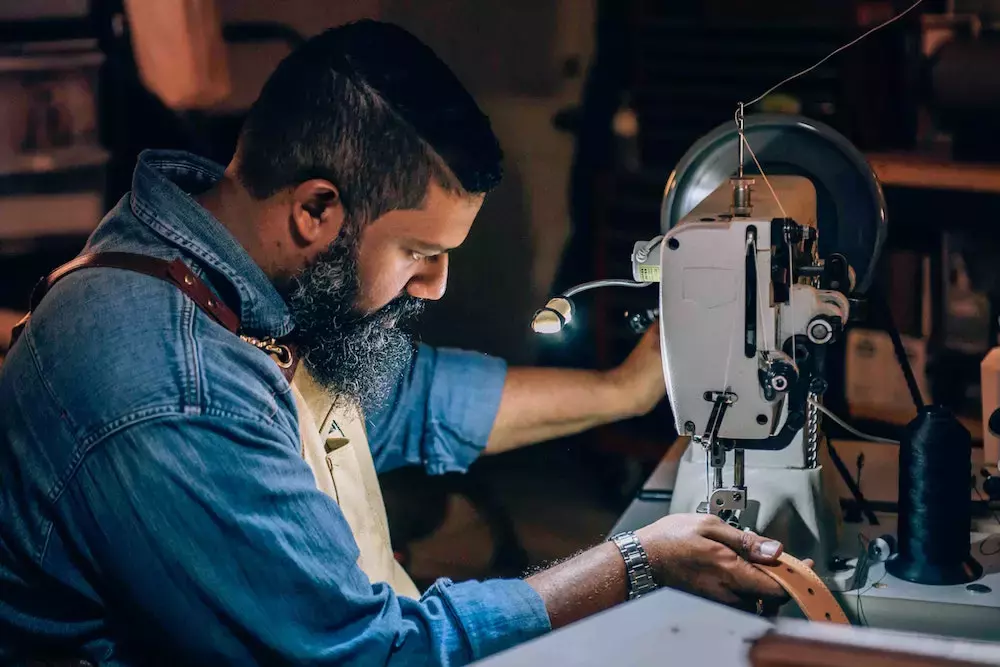Tips for Turning Your Sewing Hobby Into a Money Making Business
2020-09-21
Many crafters do what they love for the fun of it, and then some know that their products are high-quality and worthy of a price tag. So many sewers don't realize the vast and mostly untapped markets available that coincide with their craft. Because people are more conscientious of their purchasing habits and looking for more sustainable materials, you can quickly turn your sewing hobby into a business.
Find Your Niche
To get started, you need to know where you naturally excel. Ask yourself what you enjoy creating, and what you wouldn't mind creating again. Many people capitalized on the market for mask making in March or April of 2020 and now find themselves weary of making masks and even avoiding their sewing machines.
While you want to make sure you can profit off of your sewing skills, you want to do something you enjoy. You especially don't want to turn against a hobby you love because it became "work."
Find your niche.
If you are having trouble pinning down your niche, here are a few hot slots that call upon the sewing craft:
- Accessories (scarves, bags, headbands, coverups, cardigans, and more.)
- Season-driven crafts and attire (If you're the Holiday Queen, then rock it!)
- Quilts (There is hot demand for handmade quilts and people are willing to pay top dollar for a quilt that will last through the decades, or maybe, generations)
- Garments
- Specific or occasion-specific garments
- Stuffed animals
- Nursery decor (fluffy fabric alphabet pieces and more)
You could even have a super-specific niche such as, "Halloween costumes for all year wear." The beauty of it all is that it is entirely up to you.
Will You Do Repairs or Alterations?
Many sewers get their start by doing repairs and alterations for friends and family. If you hate doing alterations, then just skip this session, remember, do what you love!
However, if you will do repairs and alterations, then think about how you'll charge. Some fabrics and patterns are a pain, and others you can whip out in minutes. You might charge per hour or set flat rates for commonly requested work, such as hemming pants.
Are You Interested in Custom Work?
Let's talk about custom work. There are a few things to consider. First, you won't waste time by creating anything that won't sell because it's custom-to-order. Second, you're at the mercy of the customer. Finding specific material or making concrete designs can bring up problems with customers and push your patience to its breaking point.
Here's the deal with custom work though, every custom piece is unique, and you can market it as one-of-a-kind. An original that they won't see anywhere else, and people are likely to pay quite a bit more. Offering custom work on everyday items can pull in repeat customers. If they know that they can get exactly what they want, they'll keep coming back to you. It can also be some of the most enjoyable and rewarding work in the at-home sewing business!
Locate Your Market and Sell!
When you get down to the business size, you have to spend some time finding your market. Do you feel like middle-aged women are your target? Perhaps you're after the sustainably-savvy millennial consumer or that coveted Gen Z block that will offer repeat business for years and years. The thing is that each of these markets goes to different places, both physically and online.
For example, your middle-aged women are more likely to shop on Facebook. In contrast, millennials gravitate toward boutique sites and Amazon. You must know where your market is and who they are. Marketing is a huge factor in business success, and it requires a fair amount of consideration.
If you're not sure where to start and want to get started right away, we suggest:
- Make a few samples to post and get a diverse set of models (older, young, large, small, men and/or women)
- Open a Shopify store, Etsy store, and make a few posts on both Instagram and Facebook.
- Market yourself to your circle on various social media platforms.
- Closely watch to see which of your platforms (social media, Etsy, and Shopify) attracts the most attention.
- If you are selling through Etsy or social media, check out your customers and even get to know a bit about them. Creating relationships with your customers will keep them coming back and recommending you to their friends and family.
You can get started with a sewing machine, some fabric, and an internet connection. You don’t need professional pictures, you don’t need a full-production website, and you don’t need a team of sewers. When starting a business, make sure you create a business plan. This helps ensure that your business is on the path you choose and that you are moving in the right direction.
Start small because in these markets, both online and brick-and-mortar retail, there is always room to grow. Finally, believe in your abilities! Not many people can sew, and even fewer can produce professional-looking or polished projects. Share your skills and generate some income while you do something you love.
Get the tools you need to start your own business with GoldStar Tool. We are here to get you started with a simple sewing machine and products to begin your first kit. And when (not if) your business takes off, we offer industrial sewing machines and products to help you keep up with your orders! Contact us today if you have any questions about getting started and which products to purchase.





